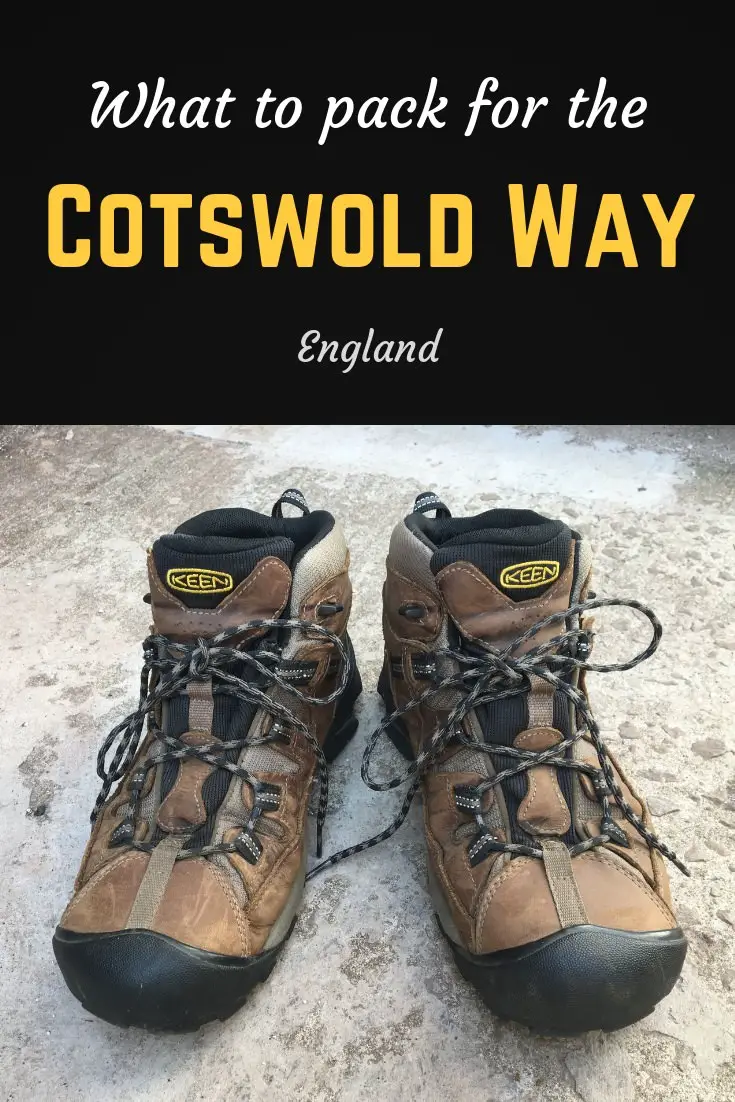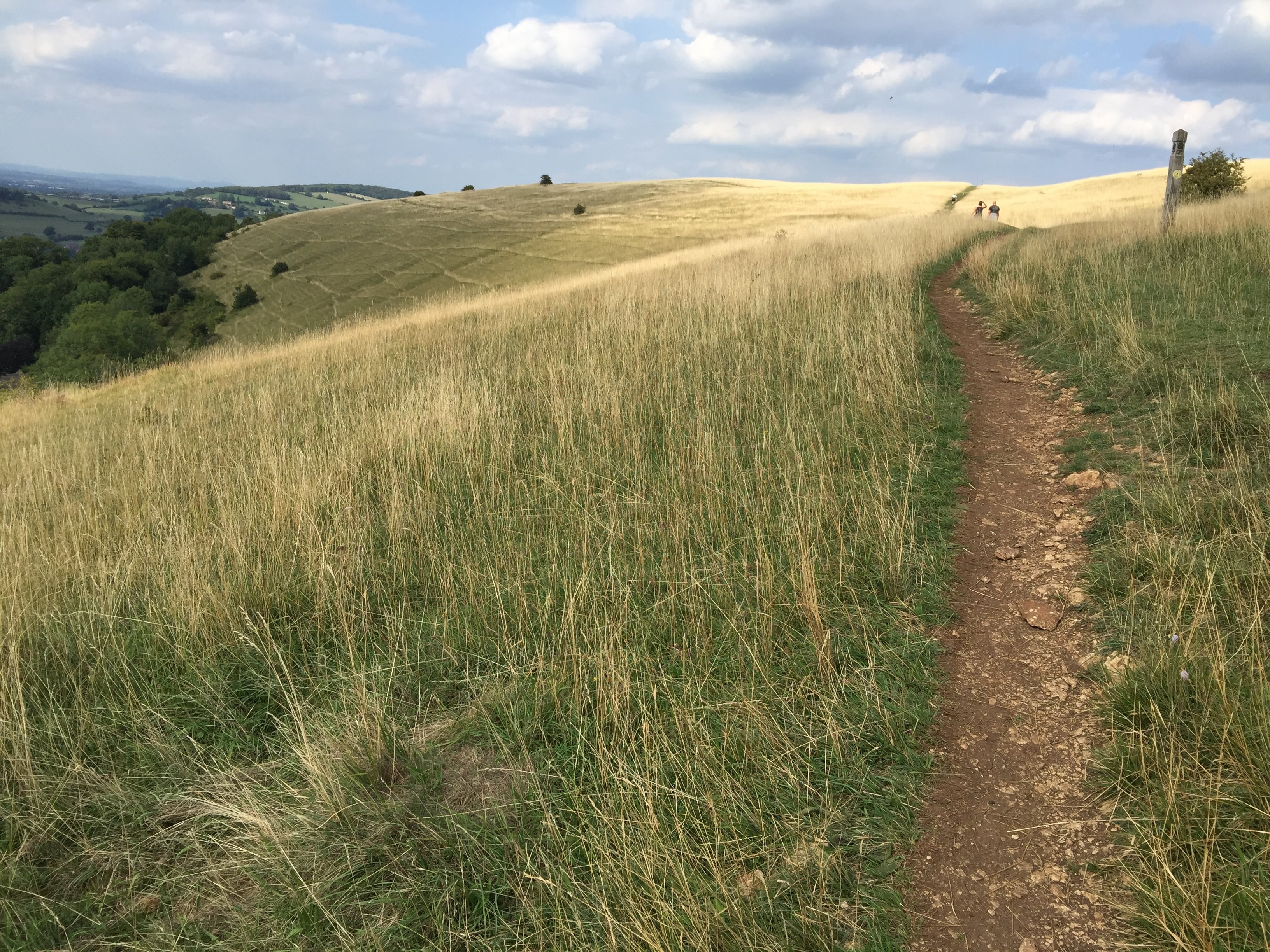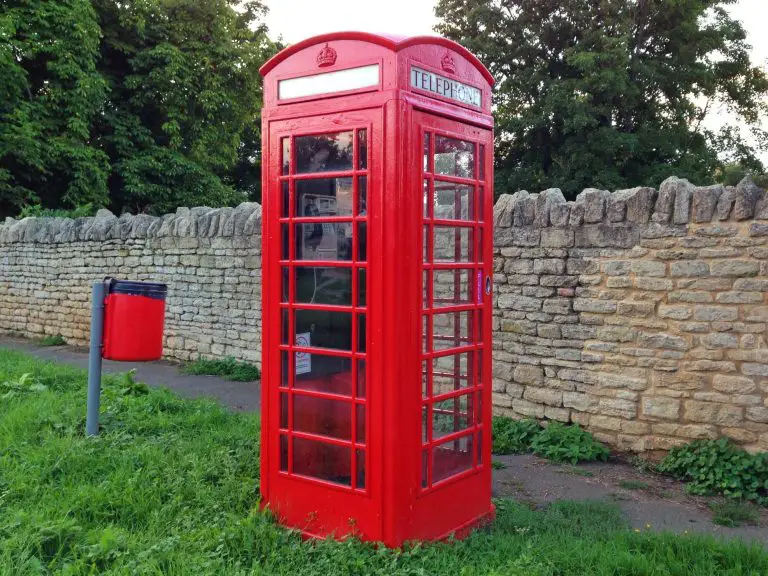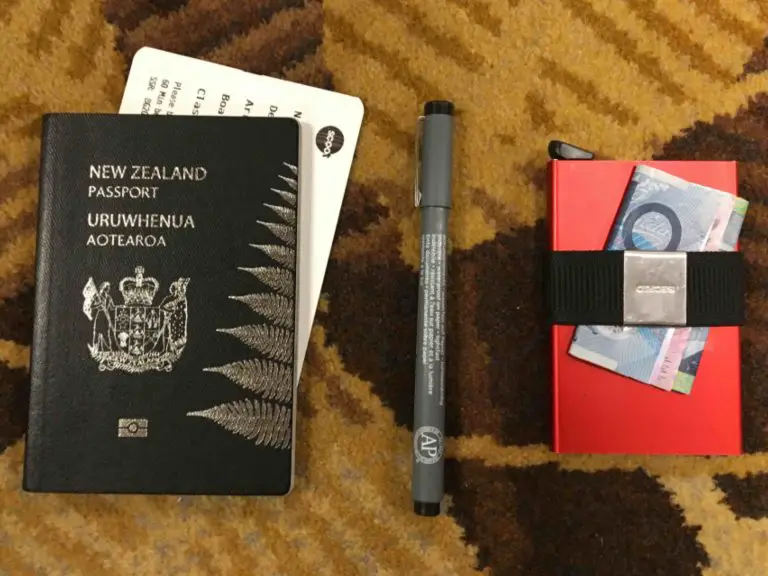My Cotswold Way packing list — and what I wish I had left behind!
I really enjoyed hiking the Cotswold Way in the UK. Here’s everything I brought, wish I had brought, and wish I had left behind! With information on what to wear in the Cotswolds, wet weather gear for the Cotswolds Way, and backpacks, this Cotswold Way packing list is also a useful packing list for hiking in the UK.
How much to pack for the Cotswold Way
No more than 8kg of gear and supplies is needed for the Cotswold Way. This should easily fit into a 30-35L pack, but a 50L pack is fine. A light pack is always your friend, and when packing for the Cotswold Way, it’s nice and easy to keep that weight down.
With multiple towns along the way, there’s no need to carry much emergency food, and basic first-aid and entertainment is easy to come by. If you follow the advice in our Cotswold Way resource guide, you’ll mainly be staying in B&Bs, and not have to carry towels, camping gear or cooking equipment.
By the very scientific method of standing on bathroom scales with and without my fully-packed bag, I estimated that everything weighed around 8kg… and that I need to lose some weight myself!
Let’s take a look at what I brought, and what I wished I had brought on the Cotswold Way.
What pack to take on the Cotswold Way
The best pack for the Cotswold Way is a 30-35L pack with good waist harness that sits close to your back. You can squeeze into a 20-25L pack; and if you like to carry a lot of extra gear, a 50L pack would be the maximum.
I didn’t have a hiking pack with me in the UK, so I borrowed my wife’s instead! While it was good enough, I really did miss my Berghaus pack: though it would have been mainly empty, the harness and support is a much better fit for my back, and would have saved me the tiny amount of shoulder pain I picked up.
- I brought: The Kathmandu Litehaul 38L.
- I wish I had: My Berghaus Trailhead 50L.
- Dave really liked his pack. I’m not sure if it was the Osprey Escapist or Osprey Talon series.
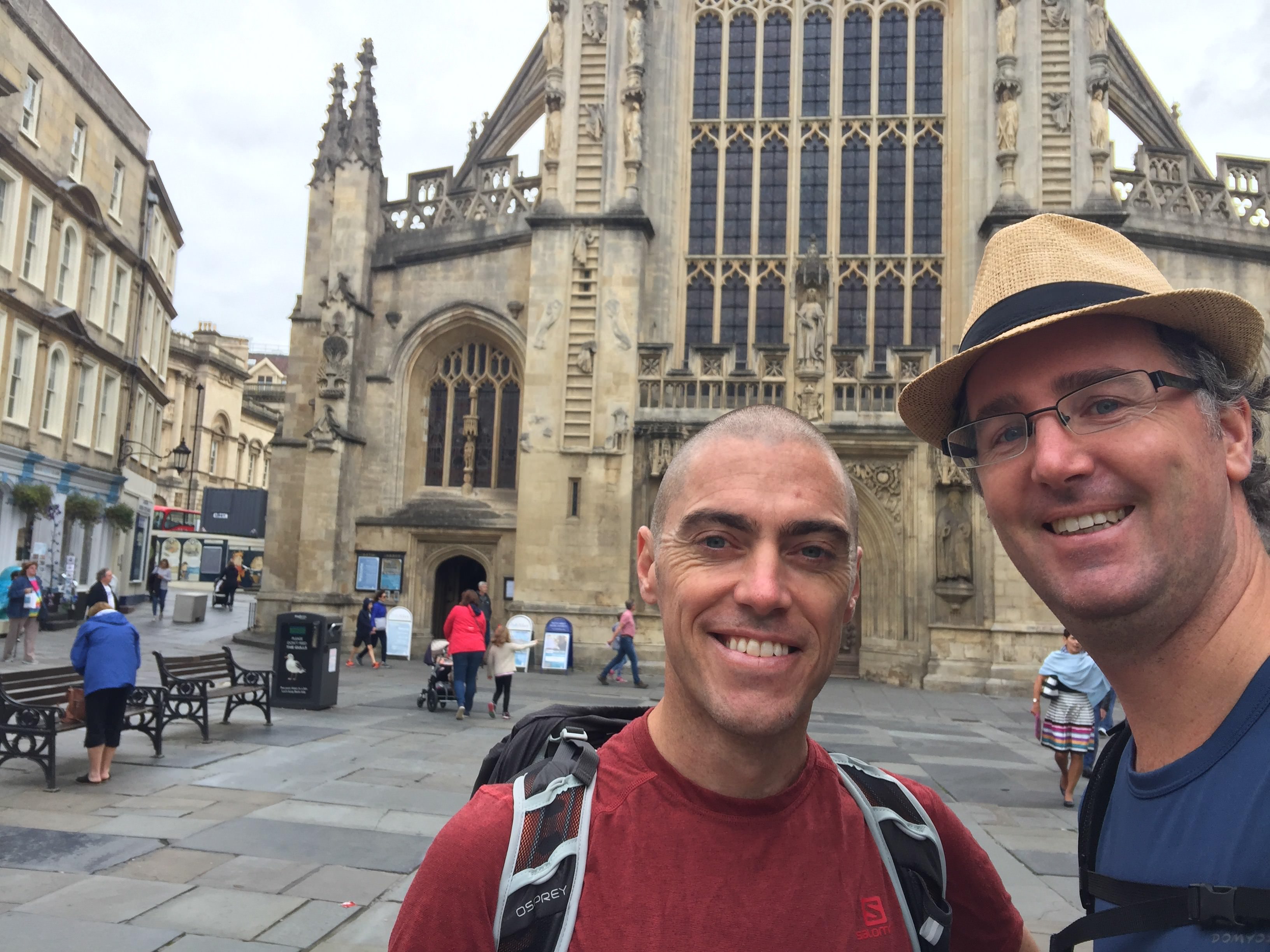
Packing List for the Cotswold Way
What to wear hiking on the Cotswold Way in the UK
I just carried two sets of clothes: some for walking and some for the evening. If we got in early enough, I could either use the B&B’s washing machine, or hand wash a few bits of pieces of hiking gear. Clothes for the evening stayed unwashed until the end of the hike.
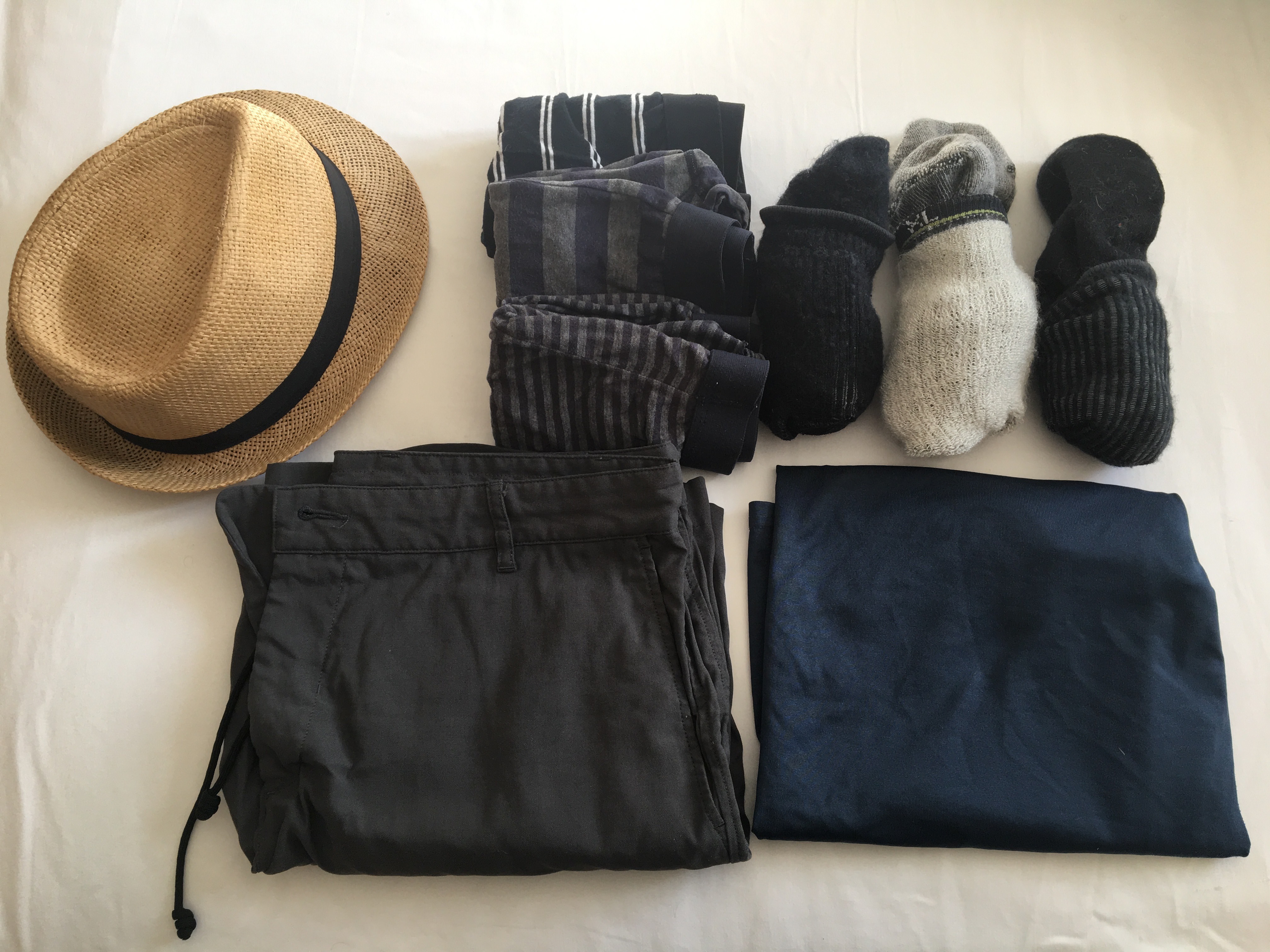
Clothes for hiking in the Cotswolds
We had remarkably warm weather for the time of year, with daytime ranges often between 10 and 20 degrees celsius: perfect for walking! It also meant shorts and t-shirts were perfect all day, even if the early mornings or late afternoons could be a bit nippy.
- Outlier New Way shorts
- Domyo quick-dry t-shirt, but I wish I had an Icebreaker crew instead. Wool over synthetics!
- Straw fedora… The ultimate style companion!
- Several pairs of cotton boxer-briefs, but icebreaker would have been better here too.
- Macpac and Smartwool socks — I ended up wearing one over the other, because of…
- Keen Targhee II shoes
Allow me a bit of a rant about these shoes: this is my fourth pair, and sometime in the last 18-24 months they changed the shape of the shoe, but not the model name or number. I was aware of some differences from the get-go, but 200km of test walking (in one- to five-hour day walks) didn’t cause any problems. Over the longer walk, they were an unmitigated disaster, and I ended up with severely deep blisters that really hampered my walk and lead to unpleasant complications and very sore, infected feet well afterwards. Needless to say, I won’t be buying a fifth pair — although they might suit you.
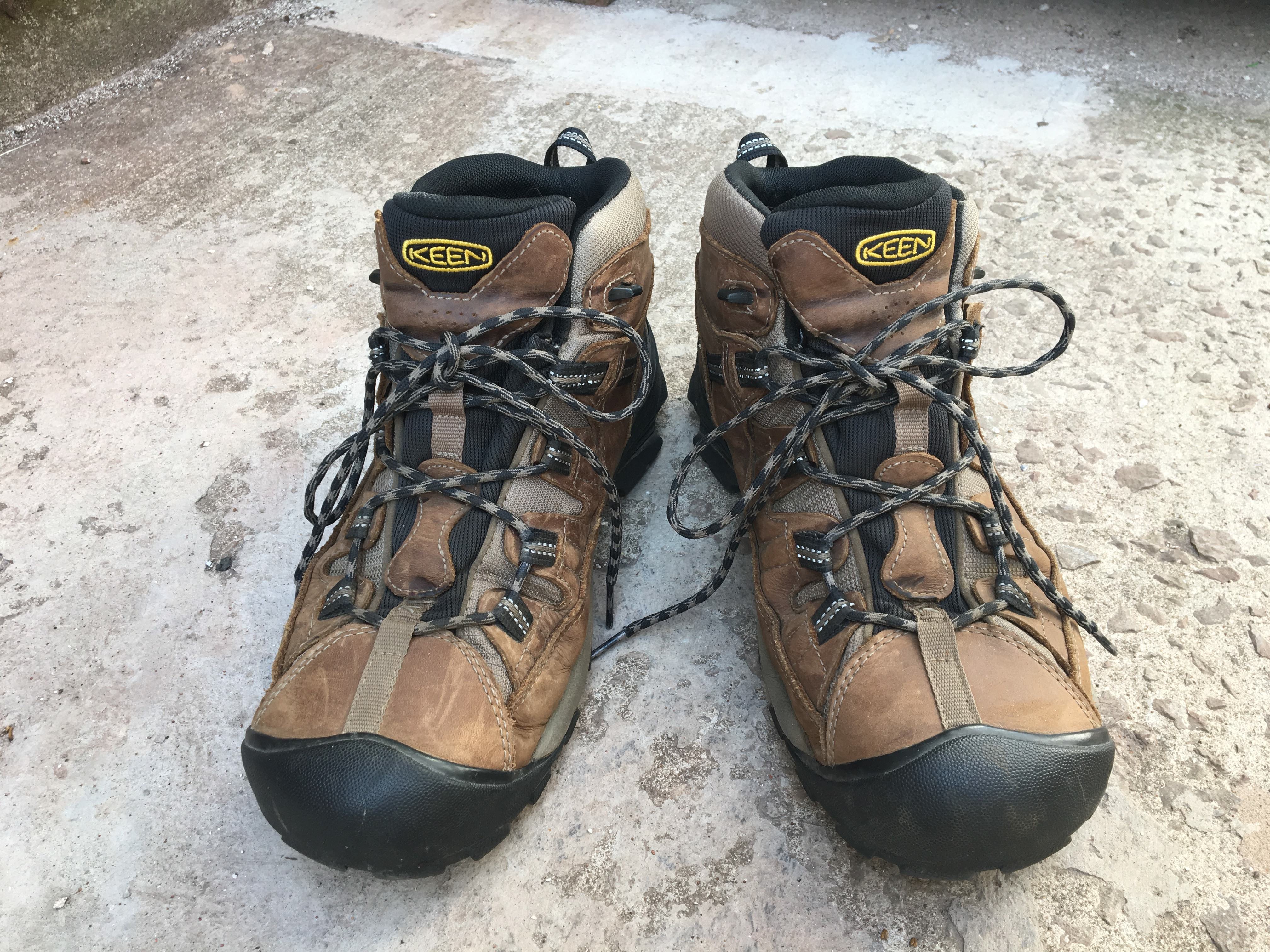
Nice Clothes for the evening while hiking in the Cotswolds
On a hike like this, you’re going to be in ‘civilised’ company most evenings, so you can’t hang out in your camping clothes like you do on a forest hike. Evening clothing needed to be stylish enough, hard-wearing and light.
- Tan Bluffworks trousers
- Mountain Hardwear shirt
- Basic jandals to let the feet breathe
- Macpac Halo puffer
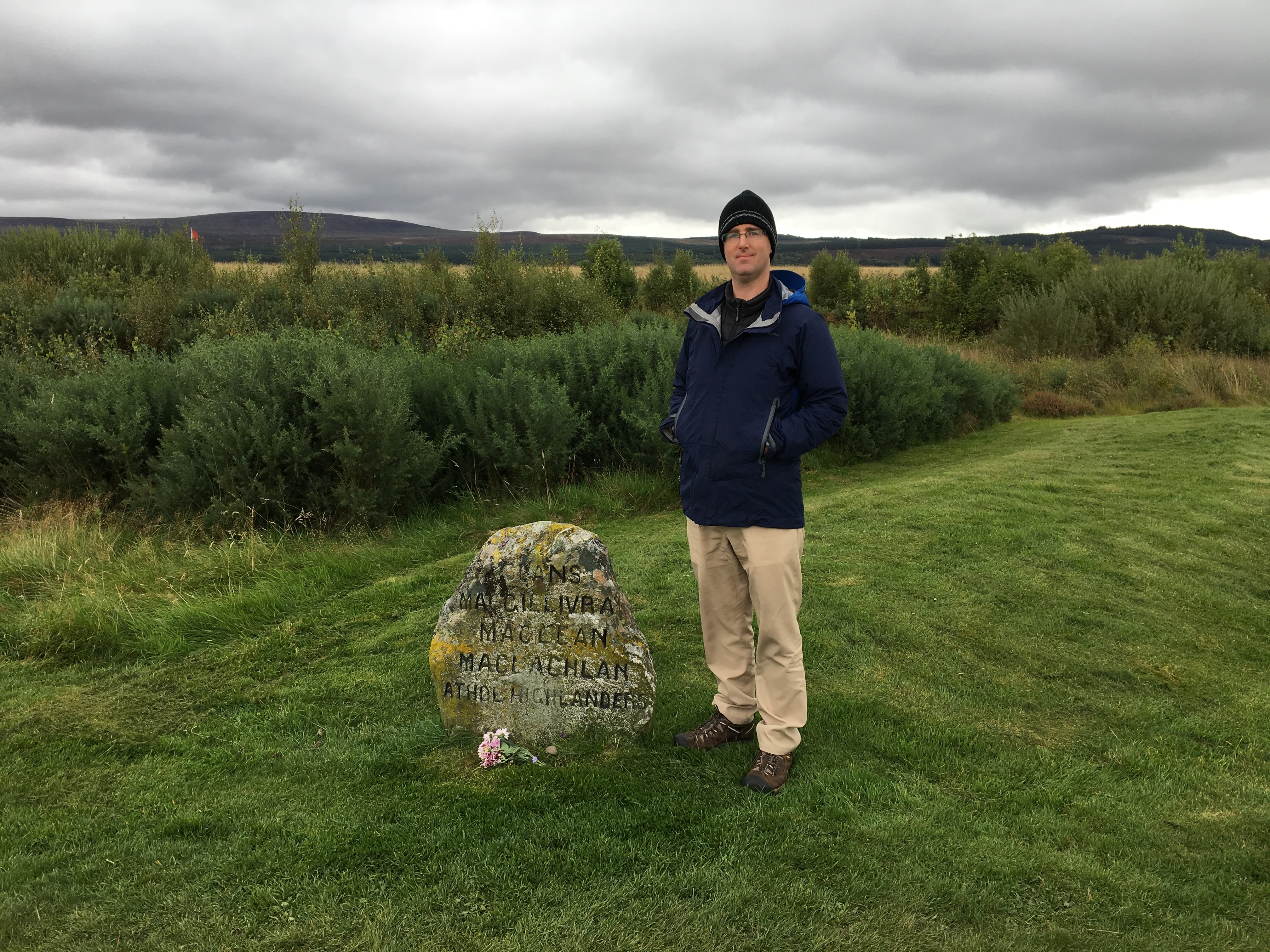
What wet-weather gear do you need on the Cotswolds Way?
I brought a wind and waterproof jacket for me, as well as a light poncho. I brought a warm polypropelene underlayer and some light sunglasses… just in case the sun came out!
You should also bring a buff or scarf, a beanie and gloves if hiking in winter.
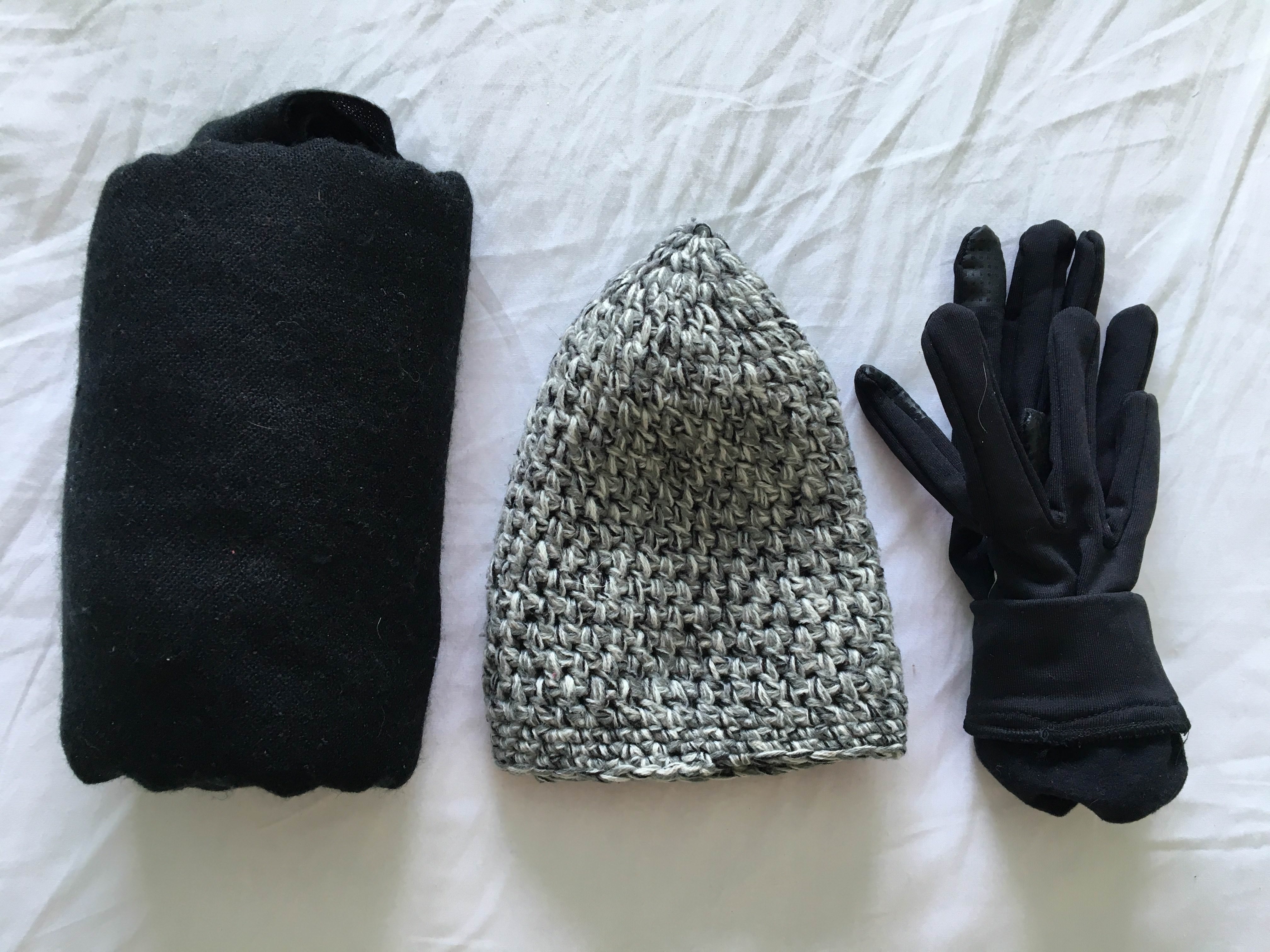
What equipment should you bring hiking in the UK?
- Cheap hiking poles – I have good ones at home in New Zealand, but needed some for this hike due to a minor knee injury I picked up about a month prior to the hike.
- The Cotswold Way guidebook I bought (instead get the Cotswold Way guidebook I wish I had bought).
- iPhone, dry bag, and cables; with ViewRanger app.
- Some cheap headphones for bedtime audio.
- Vapur water pouch, lighter than a standard bottle.
- Victorinox ‘Spartan’ pocket knife.
- Massage tools: muscle-roller stick and ball.
The paths are generally very well kept, and I can’t see a need for puttees or gaiters while hiking the Cotswold Way, even in winter. As long as you have good waterproof boots.
You can see more about the guidebooks and the app in my Cotswold Way planning guide. But what about those massage tools?
For several years I have had either knee, achilles tendon, or lower back issues while hiking. And that was a problem, as I hike a lot! In the last few months, I’ve come to understand it’s because of a few key muscles that lock up and get tighter over multiple days, or don’t adjust from my desk-bound week to my kilometre-eating weekends.
The massage stick and massage ball have been truly amazing: I used them for a few minutes after breakfast, after my afternoon shower, before dinner and before bed. On longer days I might also use them on breaks during the day. Result? Next to no pain related to any of those typical issues, and a lot less muscle pain first thing in the morning.
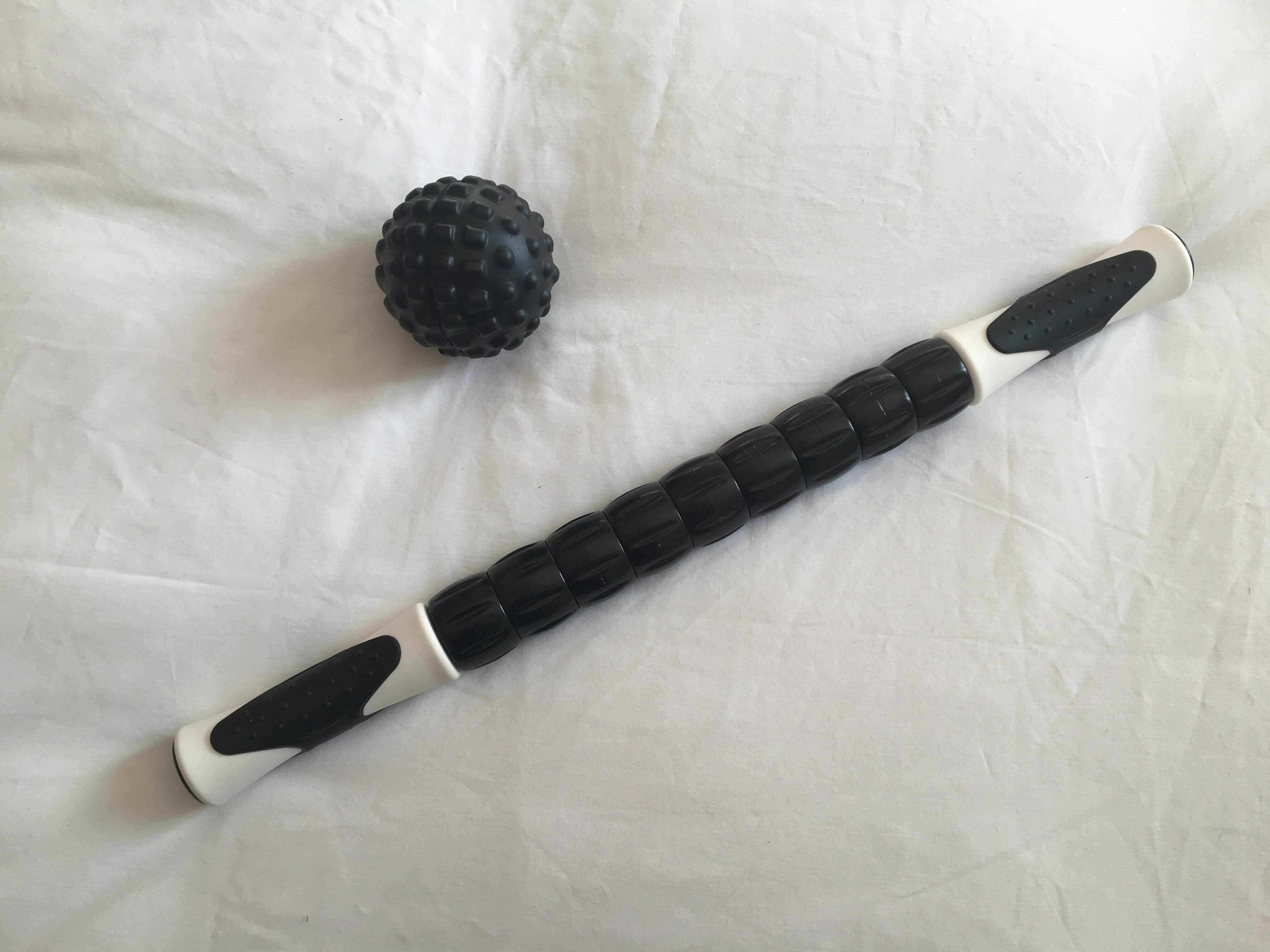
First aid and toiletries for the Cotswold Way
Apart from those nasty blisters, I didn’t really have any first-aid needs apart from a minor scratch and an insect bite… Still, I carried:
- Simple knee compress, due to that earlier injury.
- Fold-away toothbrush (lighter than my normal electric one!).
- Toothpaste, soap, and a small vial of 2-in-1 shampoo-conditioner.
- Plasters, savlon, sunscreen and some other bits and pieces.
- Ibuprofen- and paracetamol-based painkillers.
- Compeed blister plasters.
- Nail clippers and scissors. Never used: stuck with the pocket knife instead.
- Glasses and daily contact lenses.
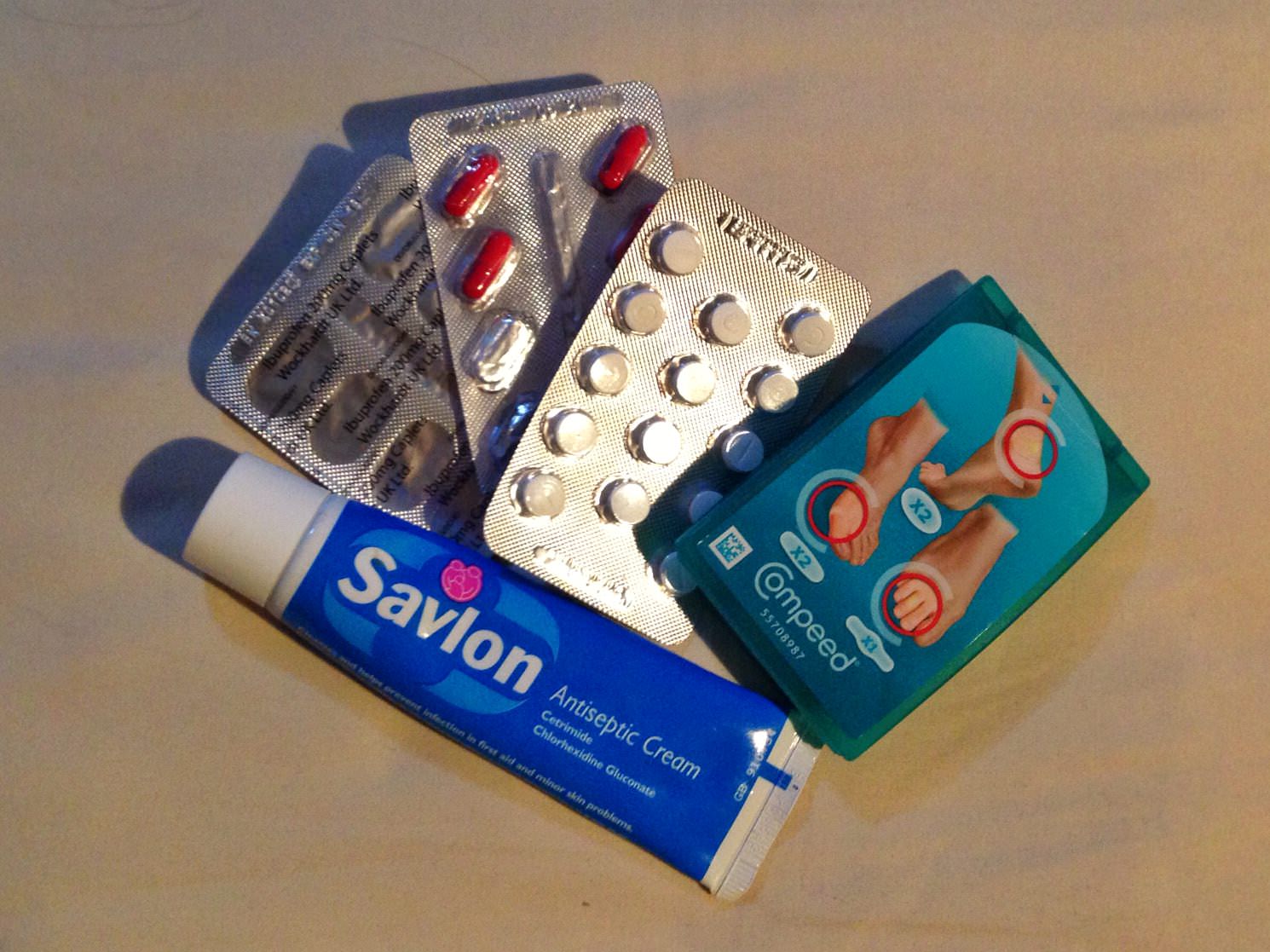
Other Gear for the Cotswold Way
- Large dry bag – books, paper and clean things lived in here.
- Secrid Wallet with cards and cash
- Notebook and pen
- Novel, The Long War
- iPad, in case of work emergencies
- Muesli bars, raisins and chocolate
- Plastic bag for dirty washing
What I wish I had left behind
All in all, I had very much over-prepared for the weather! In the end, it would have been quite suitable to have brought only the jacket or the poncho, rather than both… and I never once thought about pulling out the warm polypropylene layer. You never can tell what the weather will do, but that was quite a lot of weight for nothing.
I didn’t once touch my notebook or pen (very lax of me!), and that guidebook I brought was terrible. I could have easily jettisoned that paper without noticing much at all. If I didn’t have the chance of an emergency work call, I definitely would not have wanted my iPad with me.
Most of all though, I wish I had left behind my newly-bought hiking boots. I can’t believe that Keen would bring out a distinctly different shoe with the same model name and number. It caused me plenty of pain that I could have done without!
If you’re planning the Cotswold Way, also check out this Cotswold Way planning resources page.
What would you bring? Or not? Let me know in the comments…
More Travel Packing Advice:
- Packing for travel
- Toiletries for Travel: Ten ways to reduce your toiletries on long trips
- Toiletries on a plane: what to put in your toiletries kit
- What to pack in your under-seat carry-on bag
- Everything a girl needs in a 15kg backpack
- My Cotswold Way packing list — and what I wish I had left behind!
- The pack light podcast: how to travel carry-on size
- Be smart, pack light: what to pack for a sailing trip
